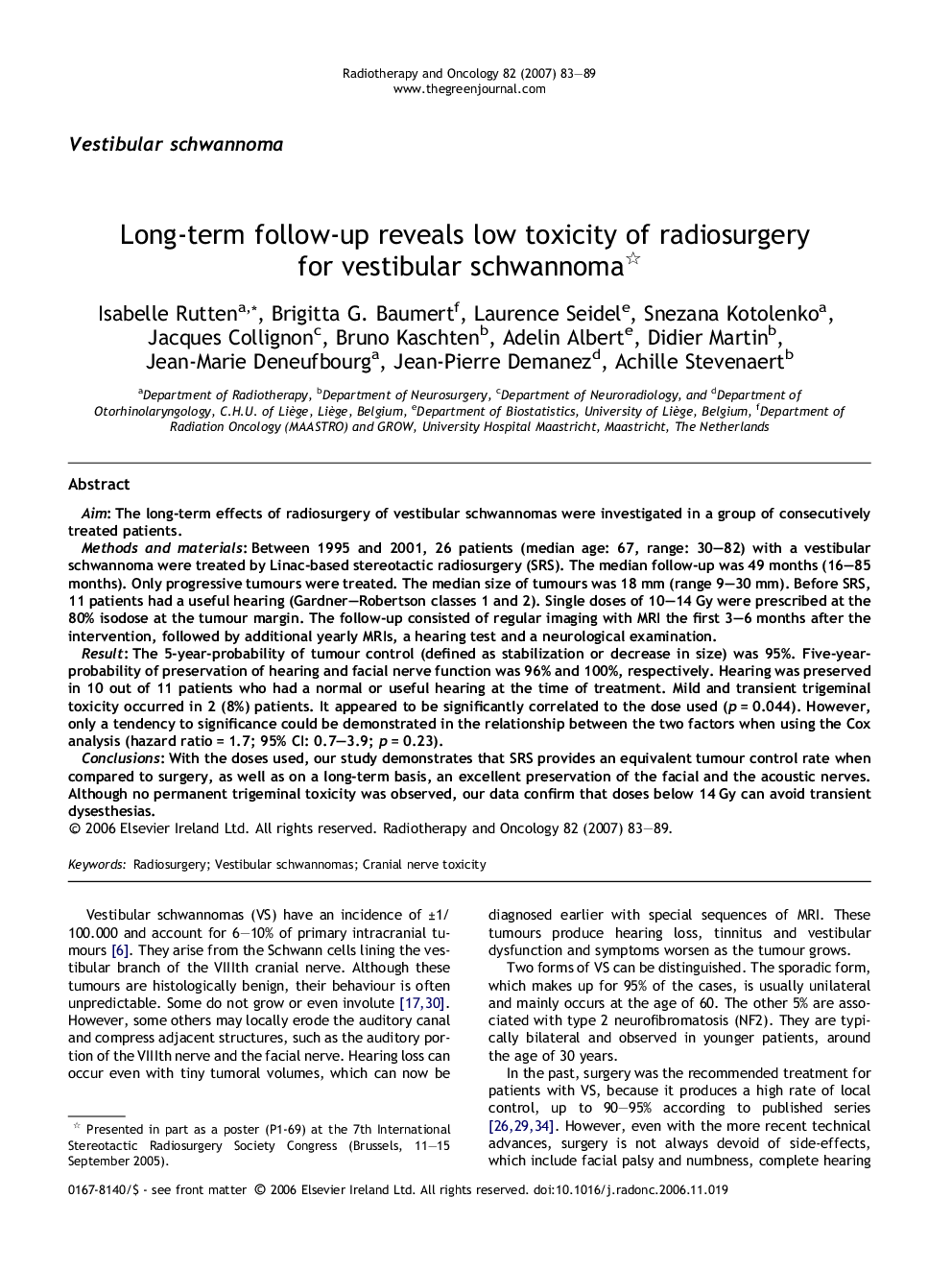| Article ID | Journal | Published Year | Pages | File Type |
|---|---|---|---|---|
| 2161119 | Radiotherapy and Oncology | 2007 | 7 Pages |
AimThe long-term effects of radiosurgery of vestibular schwannomas were investigated in a group of consecutively treated patients.Methods and materialsBetween 1995 and 2001, 26 patients (median age: 67, range: 30–82) with a vestibular schwannoma were treated by Linac-based stereotactic radiosurgery (SRS). The median follow-up was 49 months (16–85 months). Only progressive tumours were treated. The median size of tumours was 18 mm (range 9–30 mm). Before SRS, 11 patients had a useful hearing (Gardner–Robertson classes 1 and 2). Single doses of 10–14 Gy were prescribed at the 80% isodose at the tumour margin. The follow-up consisted of regular imaging with MRI the first 3–6 months after the intervention, followed by additional yearly MRIs, a hearing test and a neurological examination.ResultThe 5-year-probability of tumour control (defined as stabilization or decrease in size) was 95%. Five-year-probability of preservation of hearing and facial nerve function was 96% and 100%, respectively. Hearing was preserved in 10 out of 11 patients who had a normal or useful hearing at the time of treatment. Mild and transient trigeminal toxicity occurred in 2 (8%) patients. It appeared to be significantly correlated to the dose used (p = 0.044). However, only a tendency to significance could be demonstrated in the relationship between the two factors when using the Cox analysis (hazard ratio = 1.7; 95% CI: 0.7–3.9; p = 0.23).ConclusionsWith the doses used, our study demonstrates that SRS provides an equivalent tumour control rate when compared to surgery, as well as on a long-term basis, an excellent preservation of the facial and the acoustic nerves. Although no permanent trigeminal toxicity was observed, our data confirm that doses below 14 Gy can avoid transient dysesthesias.
